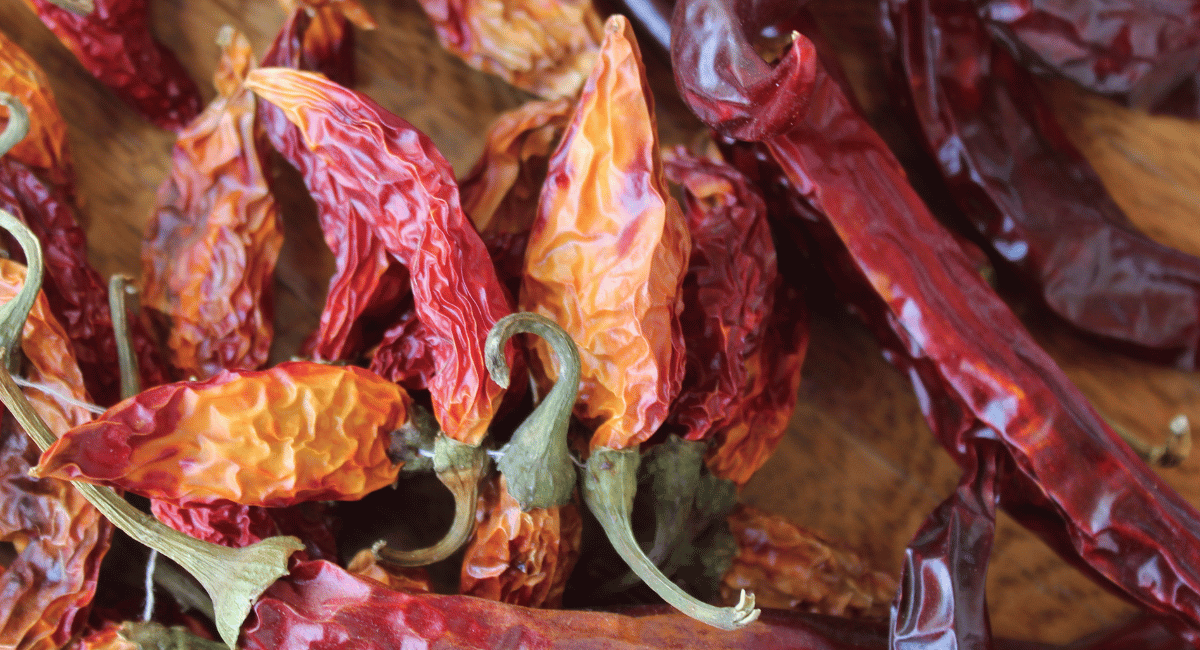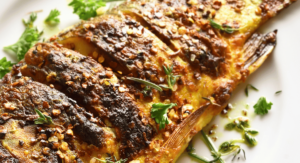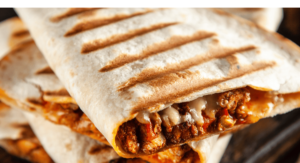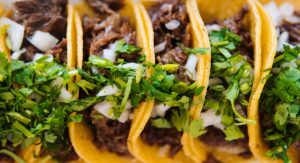Chipotle peppers are smoked and dried jalapeño peppers that originate from Mexico. The name “chipotle” originates from the Nahuatl word “chilpoctli,” which refers to smoked chili peppers.
These peppers are culturally significant in Mexican cuisine, especially in dishes like adobo sauces, salsas, marinades, and stews.
Flavor Profile and Characteristics:
- Smoky Heat and Taste: Chipotle peppers have a medium heat level, typically ranging from 5,000 to 10,000 Scoville Heat Units (SHU). They possess a unique smoky flavor resulting from the traditional process of smoking ripe jalapeños over wood, often using mesquite, imparting a rich, earthy, and slightly sweet smokiness to the peppers.
- Dried and Smoked Process: The process involves harvesting ripe jalapeño peppers, which are then dried and smoked. Initially, the jalapeños are left to ripen on the plant until they turn deep red. They are then smoked for several days in a smoking chamber until they achieve the desired dryness and smoky flavor.
The smoking process is critical in defining the chipotle’s taste, providing an intense, savory, and slightly sweet flavor profile that sets them apart from fresh jalapeños or other chili varieties.
Enhancing Flavors:
To maximize the smoky taste of chipotle peppers in dishes, consider these cooking methods:
- Roasting or grilling the rehydrated chipotle peppers briefly before incorporating them into the recipe can intensify their smoky flavor.
- Toasting the peppers in a dry skillet for a short time can also enhance their aroma and taste.
Cooking Applications:
Chipotle peppers are a versatile ingredient in Mexican cuisine, adding a distinctive smoky heat to various dishes. They are commonly used in making adobo sauces, salsas, marinades for meats like chicken or pork, and in stews or soups for depth of flavor. To use them, they can be rehydrated by soaking in hot water, pureed into sauces, or chopped finely for incorporation into different recipes.
Recipe Incorporation and Pairing Ideas:
- Signature Dishes: Chipotle peppers are often used in dishes like Chipotle Chicken, Chipotle Adobo Sauce, Chipotle Salsa, or Chipotle-infused stews and soups. They add a deep, smoky flavor with a moderate level of heat.
- Ingredient Pairings: Chipotle peppers pair well with ingredients like tomatoes, onions, garlic, cilantro, lime, honey, and various meats such as chicken, pork, or beef. These ingredients balance the smokiness and heat while complementing the overall flavor profile of the dish.
Rehydration Techniques:
To rehydrate dried chipotle peppers, follow these steps:
- Remove the stems and seeds from the dried peppers.
- Place the peppers in a bowl and cover them with hot water. You might need to weigh them down with a plate to keep them submerged.
- Let them soak for about 20-30 minutes until they become soft and pliable.
- Once rehydrated, drain the peppers and they’re ready to use in your recipe. You can also reserve the soaking liquid for added flavor.
Growing and Selecting Chipotle Peppers:
Chipotle peppers are a type of smoked and dried jalapeño pepper, known for their smoky flavor and medium heat. Here are details on their optimal growing conditions and selection tips:
Cultivation Conditions for Chipotle Peppers:
Growing Conditions:
- Climate: Chipotle peppers thrive in warm climates. They require a long growing season with plenty of sunlight.
- Soil: Well-draining soil with good fertility is essential. Aim for a pH range of 6.0 to 7.0.
- Temperature: They prefer temperatures between 70°F to 85°F (21°C to 29°C) during the day and not below 50°F (10°C) at night.
- Watering: They need regular watering, especially during flowering and fruiting, but avoid waterlogged soil.
Growing at Home:
Chipotle peppers can certainly be grown at home, either in pots or directly in the ground if the climate is suitable. Here’s how:
- Start from Seeds: Begin by germinating seeds indoors in seedling trays before transplanting them outdoors after the last frost date in your area.
- Transplanting: Choose a sunny spot in your garden or a large pot (at least 5 gallons) for each plant.
- Care: Regular watering, proper nutrition (with suitable fertilizer), and occasional pruning for better airflow and fruit development are necessary.
- Harvesting: Harvest ripe jalapeños, and for chipotle peppers, allow them to ripen further on the plant until they turn red and start to dry. You can then smoke and dry them further for the chipotle flavor.
Selection Tips for Dried Chipotle Peppers:
When purchasing dried Chipotle peppers:
- Appearance: Look for peppers that are whole, firm, and pliable but not brittle. Avoid peppers with signs of mold, discoloration, or any moisture.
- Aroma: Quality Chipotle peppers should have a strong, smoky aroma. If they smell musty or have no aroma, they might not be fresh or of good quality.
- Color: They should have a deep red to dark brown color. Avoid any that appear faded or have inconsistent coloring.
- Texture: Gently press the peppers; they should feel a bit flexible without breaking apart. Brittle or overly dry peppers might lack flavor or have lost their quality.
By considering these factors, you can select high-quality dried Chipotle peppers that will enhance the flavor of your dishes. Always store dried Chipotle peppers in an airtight container in a cool, dark place to maintain their quality and flavor for an extended period.
Substitute Options:
While nothing can replicate the exact smoky flavor of chipotle peppers, you can use other chili peppers to add a similar level of heat or smokiness. Here are some options:
- Smoked Paprika: It offers a smoky flavor but lacks the heat. You may need to combine it with a hotter chili for heat.
- Ancho Peppers: Though milder and less smoky, they provide a similar depth of flavor and can be used in various recipes.
- Morita Peppers: These are smoked jalapeños and can be a closer substitute if you’re after the smoky flavor.
Handling Precautions:
To maintain the distinctive smoky flavor of chipotle peppers without overpowering the dish:
- Use them cautiously; they can easily dominate the dish with their smokiness and heat.
- Start with a small amount and adjust according to taste.
- Balance the chipotle peppers with other ingredients to create a harmonious flavor profile without overwhelming the dish.





